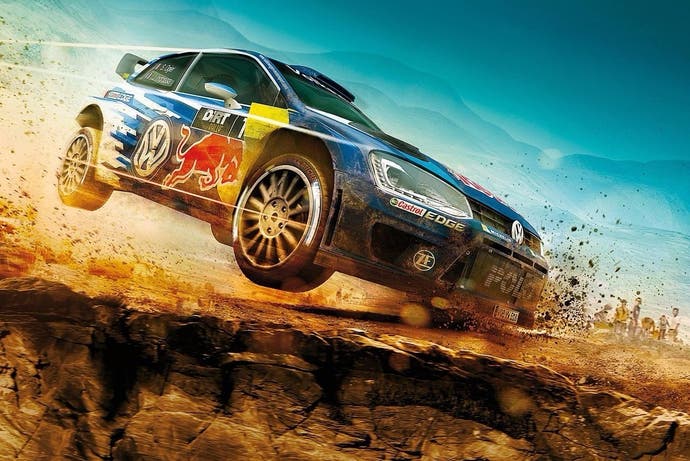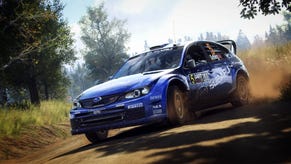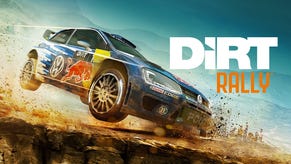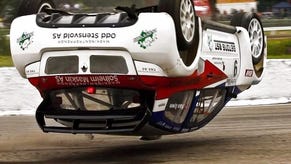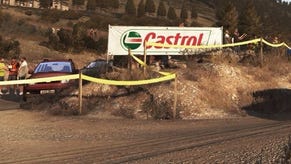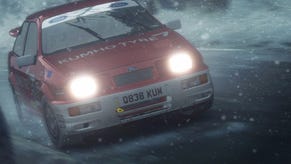Dirt Rally console review
Acute angles.
To understand rally and, by association, Dirt Rally, a British video game that conjures all of the long-form drama and complexity of the sport with unmatched brilliance, you must first disavow yourself of the notion that it's simply a case of reaching the finish line first. That's like saying a war is won merely by defeating the enemy -- a technical truth, but one that implies nothing of the tapestry of skirmishes, manoeuvres and machinations that comprise a final victory. No, to truly understand Dirt Rally, you must understand that this is a challenge broken into ten thousand discrete, interrelated trials, the stakes of which build into a glorious crescendo.
First, there are the corners, those moment-to-moment swipes and swivels that come at you at an elastic tempo and in varying degrees of severity. Your long-suffering, stoic-voiced co-driver offers a premonition of each, stating the direction (left, or right) followed by the speed at which you should make the approach. A six is the gentlest kind of turn, one that can be taken at something close to top speed. A one should be approached with extreme sloth. (Beyond that, a 'square' is a 90 degree angle, a 'hairpin' is a corner that requires a handbrake turn, while an 'acute' should be tackled with a stiff drink). In Dirt Rally every corner has the potential to, if not upend your car, then at least to send you skittering into a ditch, from which you must be recovered with a 30 second penalty. You soon learn to heed your co-driver's calls. If he barks 'don't cut', then you cut at your peril.
Next, each course is divided into (usually) four sections, separated by invisible dividing lines. There are no other cars around so the time stamp you're presented with when you reach the end of any particular section is the only measure of performance. Pass the divider ahead of the rest of the competition and you 'win' the section -- it turns green on your HUD. Place second or worse and it'll highlight red, baiting you to push still harder on the next section's corners. Damage your car on any of these discrete sections and there's nothing you can do but limp on.

There is no rewind function, the driving game's eraser, pioneered by Codemasters' GRID series, to allow you to undo the mistakes of the past few seconds, and retake a corner. Even restarts are limited: five per leg of a championship. Only a puncture can be repaired on site, albeit at the off-putting cost of a 90 second penalty. In this way, the first whisper of strategy enters the fray. The first and second section of a course may be far trickier than the third and fourth, so you may choose to go slowly at first, in order to minimise the risk of damage, then make up the lost time later in the race.
Things build in great chunks up from there. There are four courses to each leg of a rally competition, which is usually situated in one country and on a certain type of terrain. You are only allowed to fix your car's escalating ailments at the midpoint of a leg, forcing you to take a longer strategic view. Race too hard on the first course and you may sustain damage that will ruin your chances in the second. Even on the mechanic's bench, there are tough decisions to be made. You can specify which repairs your mechanics make, but the combined time 'cost' of those repairs cannot exceed 30 seconds, unless you want to incur further time penalties on the road.
By this point, two races, eight sections and several hundred corners into your career, the deeper complexities of the sport are beginning to come into focus. By the time you start the final race in a stage, the stakes have mounted in such a way as to make every corner you take a colossal risk. There's more. Each rally championship is comprised of numerous legs, each of which takes place in a different region, on different types of terrain that require different kinds of set-up. There's a tremendous different between Jamsa in Finland's snowy funnels and Baumholder Germany's pastoral weaving. Dirt Rally offers a smorgasbord of racing types, from tarmac hill-climbs in soggy Wales, to grasping scrambles through snow-banked funnels in Sweden, to gravelly rally-cross sprints. Each requires a different racing approach, altering the forcefulness of your braking, for example, or, if you're mechanically minded, allowing you to tinker with the car's set-up (you can, of course, hire virtual experts to handle this side of things if you prefer to focus only on the driving).

The combined effect of this nest of decisions and challenges is a game where the stakes build incrementally. You will, at times, lose your concentration and spin out on a corner. In other racing games, such an error is enough to send you reaching for the restart button. Here, it's a mistake you must live with and recover from. You will, at times, lose a section of a race, or an entire race, or even an entire leg of a championship. This does not mean, however, that you will lose the war. Rally (at least the brand of rally offered by Codemasters here), is a long-term project. There are battles that you lose and battles that you win. In the end, you hope to piece together enough minor triumphs to amass a major victory. The result is a solemn sim that, despite its simplistic graphics (the detailing on track-side officials and spectators is almost PlayStation-era in its crudeness), wields enormous dramatic power. Neither must you be an enthusiast to yield to that power. Dirt Rally is eminently playable with a pad and, so long as you lean on the ABS and traction control driving aids, manageable for patient beginners.
It's been a decade of loss for racing video games in the UK, from the death of Colin McRae, the rally driver who lent his name to Codemasters' first rally game, in 2007, to the domino run of closures of numerous racing game studios around the country, most recently, that of Evolution Studios. Here, Codemasters offers us a bright beam of hope through the trees. Dirt Rally, a muddy, plucky sim with an island-tough mentality (that 60 frames per second refresh rate is unerring), cannot compete with the moneyed luxury of today's Japanese and American supercar racers in terms of polygon-counts. It has neither Gran Turismo's lavish roster, nor Forza's luxurious presentation. But the stories it tells? You'll never forget them.
